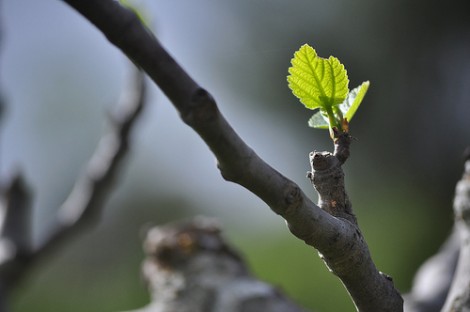“On the following day”
Read the text: Mark 11:12-19

There are so few opportunities to see the anger of Jesus.
We get so lulled by the images of the sweet Jesus, the stained-glass stick figure or the imagined bearded Caucasian with the sheep on his back and the children at his feet, that the Jesus with the bullwhip raving at the Temple is weird and unsettling. Sort of angry, sort of cranky. I imagine him saying “Darn kids! Get off my lawn!”
Even more confusing is the frame of the fig tree Mark’s gospel possesses. Jesus and the disciples pass the tree this morning and the next. When the disciples pass by it tomorrow, it will be withered.
Jesus is pissed at the tree for something it can’t seem to help. But the people at the Temple…that’s another story.
Perhaps we are not to see this anger as uncharacteristic of Jesus, but the response to a world that is uncharacteristic of the Kingdom of God. The fig tree is not producing figs:
for it was not the season for figs
and yet, a fig is necessary, or at least requested. Why does the fig tree only produce on its own time, in its own season? Why does the tree not instead produce to the need? Why does the Temple not produce to the need?
What in our lives–our families, our churches, our communities–does not produce to the need?
And perhaps more troubling for many of us to deal with: what if we aren’t to be the ones looking for figs on the tree, but we are the branches of the tree itself? A tree that is not producing figs at a time when figs are needed. What if we are today’s money changers and dove sellers? What if Jesus is currently asking for figs and we aren’t bearing them?
The key for us then is to better know what the Kingdom of God looks like and do that, rather than maintain traditions that do not bear fruit in the current season.
[This is Part 2 of a series of meditations for Holy Week. If you haven’t, you might want to start from the beginning.]

Leave a Reply